Слайд 2The Royal family at the opening ceremony of the Museum, 1912
In 1894, Ivan Tsvetaev, the father of the poet Marina Tsvetaeva, proposed at the First Congress of Russian artists and art lovers to create an educational Museum. Four years later, the project was presented to Emperor Nicholas II. The Emperor approved the project and allocated 200,000 rubles for the construction of the Museum. Many investors, having learned about the approval of Nicholas II, also allocated a total of about 200,000 rubles, provided that the Museum will bear the name of Alexander the third.

Слайд 3TSVETAEV COLLECTION OF PLASTER CAST REPRODUCTIONS
Collecting exhibits for the Museum began even
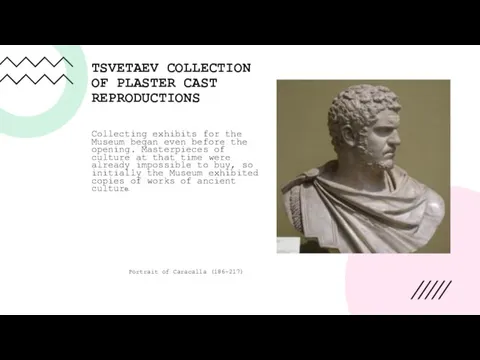
before the opening. Masterpieces of culture at that time were already impossible to buy, so initially the Museum exhibited copies of works of ancient culture.
Portrait of Caracalla (186-217)
Слайд 4Brothers Ilyas and Joseph Brooch. Cupids fighting for the heart
The first originals

in the Museum appeared only a year after the opening of the Museum thanks to Dmitry Khomyakov. These were Italian sculptures from the 16th century.
Слайд 5Rinaldo and Armida by Nicolas Poussin
Initially, the Museum did not present paintings. Only 14
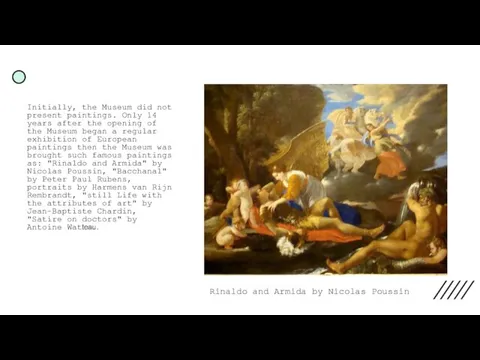
years after the opening of the Museum began a regular exhibition of European paintings then the Museum was brought such famous paintings as: "Rinaldo and Armida" by Nicolas Poussin, "Bacchanal" by Peter Paul Rubens, portraits by Harmens van Rijn Rembrandt, "still Life with the attributes of art" by Jean-Baptiste Chardin, "Satire on doctors" by Antoine Watteau.
Слайд 6Claude Monet
Boulevar des Capucines. 1873
In 1948, after the closure of the state Museum
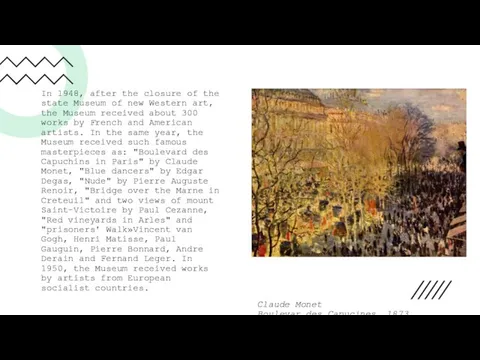
of new Western art, the Museum received about 300 works by French and American artists. In the same year, the Museum received such famous masterpieces as: "Boulevard des Capuchins in Paris" by Claude Monet, "Blue dancers" by Edgar Degas, "Nude" by Pierre Auguste Renoir, "Bridge over the Marne in Creteuil" and two views of mount Saint-Victoire by Paul Cezanne, "Red vineyards in Arles" and "prisoners' Walk»Vincent van Gogh, Henri Matisse, Paul Gauguin, Pierre Bonnard, Andre Derain and Fernand Leger. In 1950, the Museum received works by artists from European socialist countries.
Слайд 7In 1949, all the exhibits were removed to the basement and the

Museum was given over to an exhibition of gifts sent to Joseph Stalin for his 70th birthday. After Stalin's death, the Museum exposition was returned to its place.
Слайд 8Pablo Picasso
Old Jew and a Boy (Blind Beggar with a Boy). 1903
Three years
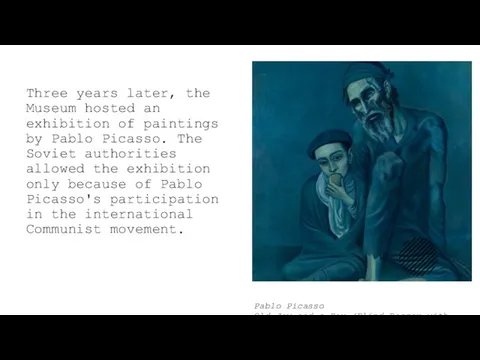
later, the Museum hosted an exhibition of paintings by Pablo Picasso. The Soviet authorities allowed the exhibition only because of Pablo Picasso's participation in the international Communist movement.
Слайд 9Kazimir Malevich
Children on the grass. 1908
In 1981, the Museum hosted the exhibition Moscow
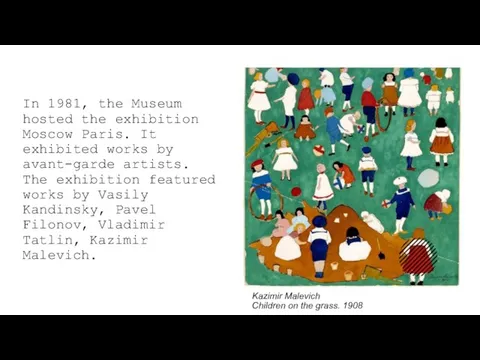
Paris. It exhibited works by avant-garde artists. The exhibition featured works by Vasily Kandinsky, Pavel Filonov, Vladimir Tatlin, Kazimir Malevich.
Слайд 10Edgar Degas
Blue dancers. Circa 1898

Слайд 11Pierre-Auguste Renoir
Portrait of Jeanne Samary. 1877
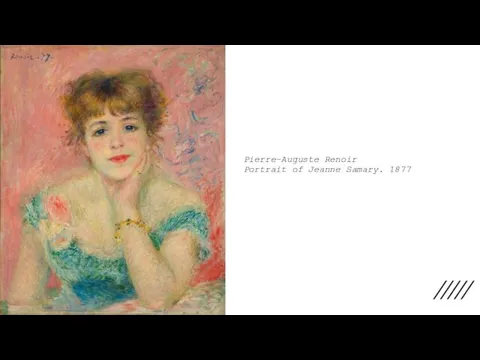
Слайд 12Toulouse-Lautrec, Henri Marie Raymond de
Woman at a window. 1889
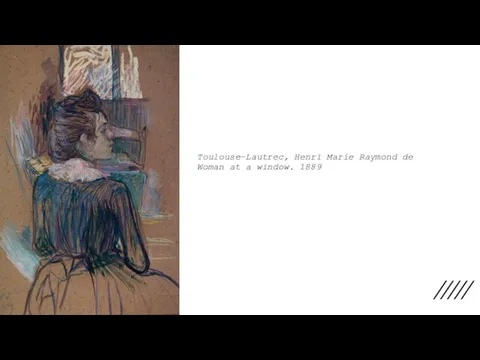
Слайд 13Vincent van Gogh
Red Vineyard at Arles (Montmajour). November 1888
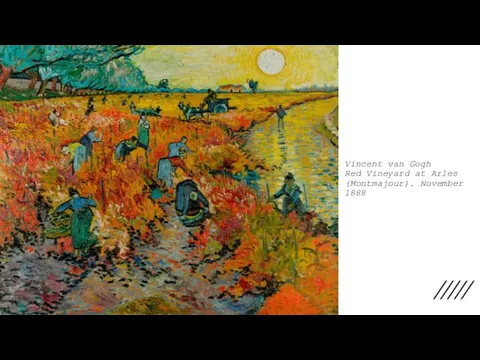
Слайд 14Philipp Veit
Portrait of a Woman. 1820-s

Слайд 15Lorrain, Claude
THE RAPE OF EUROPE. 1655
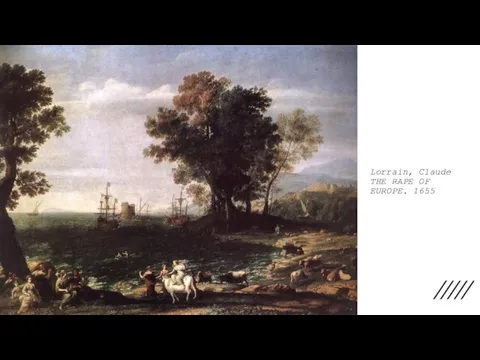
Слайд 16André Derain
Drying the Sails. 1905
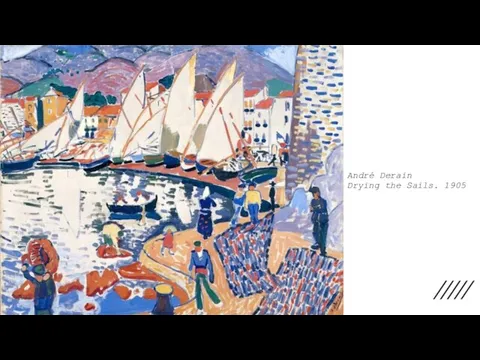
Слайд 17Sandro Botticelli
Annuciation. 1495-1498
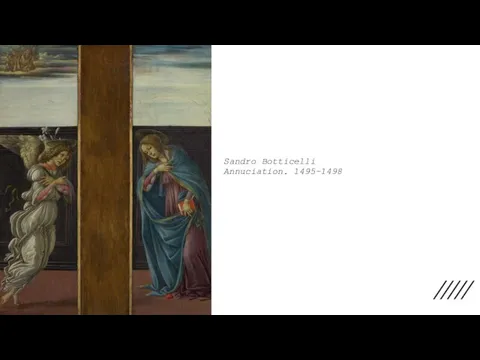
Слайд 18Giovanni Antonio Canal (Canaletto)
Bucentaur's return to the pier by the Palazzo ducale. 1727-1729
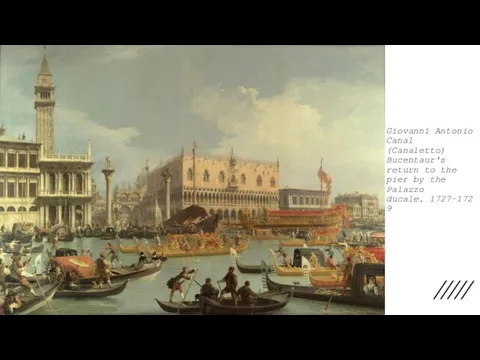
Слайд 19Edgar Degas
Ballet Rehearsal. 1875-1877
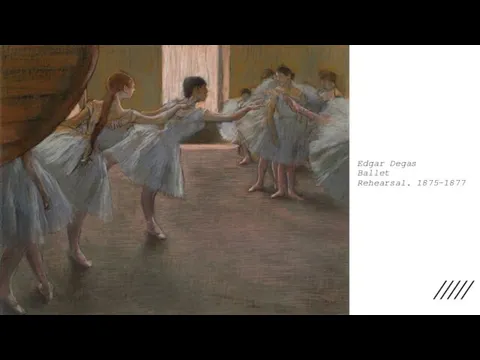
Слайд 20Pierre-Auguste Renoir
In the garden. Under the trees of Moulin de la Galette. 1876
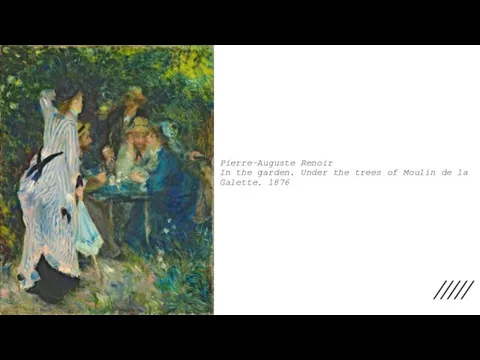
Слайд 22Claude Monet
Luncheon on the Grass. 1866
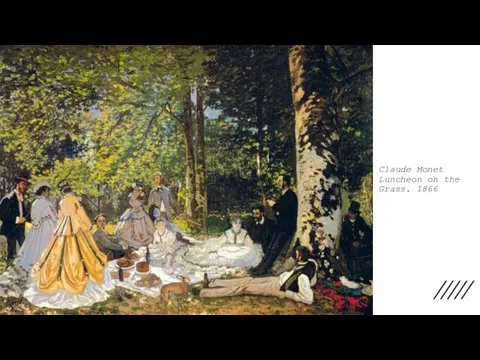
Слайд 23Pablo Picasso
Young Acrobat on a Ball. 1905
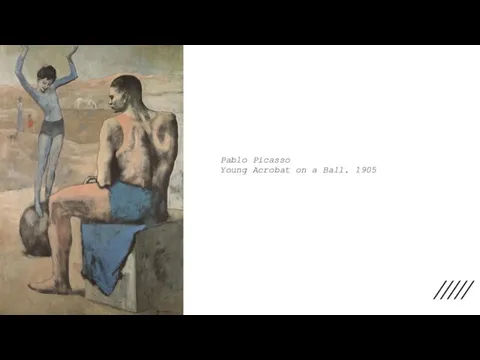
Слайд 24Edouard Manet
The Bar. 1878-1879
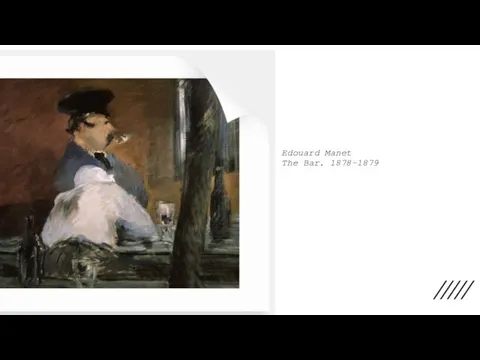
Слайд 25Francisco de Zurbarán
The Madonna and Child. 1658
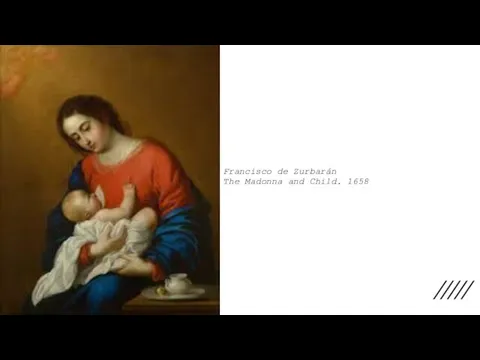



















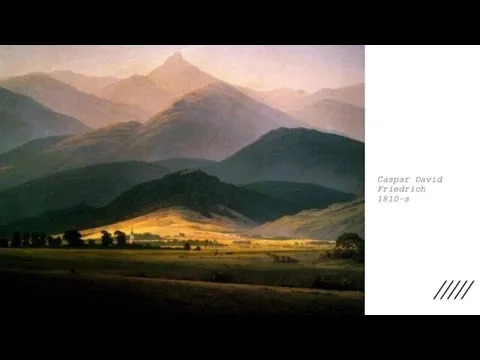




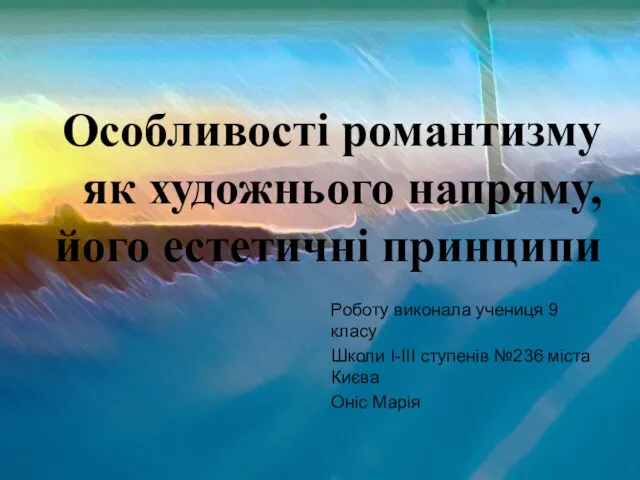 Особливості романтизму як художнього напряму, його естетичні принципи. 9 класс
Особливості романтизму як художнього напряму, його естетичні принципи. 9 класс Контур. Экстерн для участников проекта Прямые выплаты
Контур. Экстерн для участников проекта Прямые выплаты План реализации проекта
План реализации проекта Природные комплексы суши и океана
Природные комплексы суши и океана Что такое окружающий мир?
Что такое окружающий мир? Подростковая преступность в условиях закона 15.39
Подростковая преступность в условиях закона 15.39 Західна цивілізація та господарський розвиток античних держав
Західна цивілізація та господарський розвиток античних держав Механизмы социальной регуляции поведения личности
Механизмы социальной регуляции поведения личности Слава и Марина. Фотоальбом
Слава и Марина. Фотоальбом Древнееврейское царство
Древнееврейское царство «Я б в спасатели пошел, пусть меня научат…»
«Я б в спасатели пошел, пусть меня научат…» UMBRO. Ассортимент коллекции
UMBRO. Ассортимент коллекции Презентация на тему Химическая промышленность России
Презентация на тему Химическая промышленность России Источники трудового права
Источники трудового права Владимир Высоцкий
Владимир Высоцкий Синичка
Синичка Социальная реклама
Социальная реклама Играем в куклы
Играем в куклы Базовые категории управления
Базовые категории управления Элементы Статистики
Элементы Статистики  Человек и закон
Человек и закон Всероссийская акция Вместе всей семьёй. Семья Горбачевых
Всероссийская акция Вместе всей семьёй. Семья Горбачевых 20170512_sistemno-deyatelnostnyy_podhod_v_obrazovanii_1_0
20170512_sistemno-deyatelnostnyy_podhod_v_obrazovanii_1_0 ОБЯЗАННОСТИ ПРАВИТЕЛЬСТВА: - собирать - предоставлять - активно распространять
ОБЯЗАННОСТИ ПРАВИТЕЛЬСТВА: - собирать - предоставлять - активно распространять Информационная война виртуальность или реальность
Информационная война виртуальность или реальность Учитель и ученик за роялем
Учитель и ученик за роялем Литературное чтение
Литературное чтение Новые диммеры Merten
Новые диммеры Merten